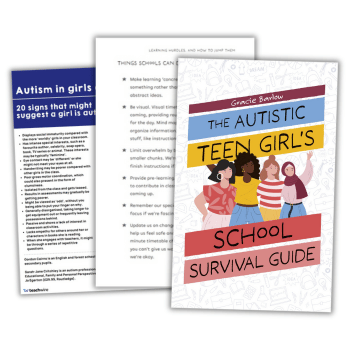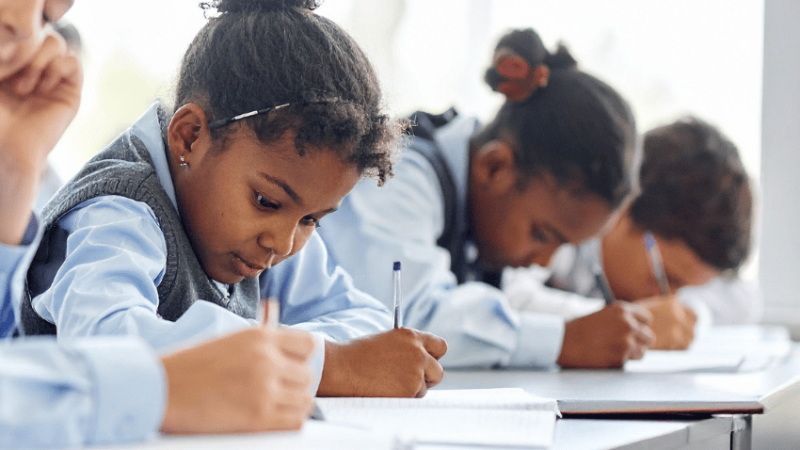Enhancing Continuous Provision For Children With SEN

Kathy Brodie suggests easy and effective ways to enhance your continuous provision for children with special educational needs…

- by Kathy Brodie
- Consultant, trainer, author and founder of Early Years TV Visit website

It is essential that your classrooms provide good continuous provision for all the children in your care – this means that some enhancements may be necessary to provide suitable provision for children with special educational needs, where they have specific, additional requirements. If you have a clear diagnosis, this may be an easy task to fulfil. However, you may also have children in your setting who have ‘hidden’ SEN.
These could include children with intermittent hearing loss through glue ear, an undiagnosed visual impairment or even challenging behaviour due to a change in home circumstances. It may feel as though it is impossible to provide suitable provision for these children, without knowing about their additional needs, but there are some things that you can do that will enhance your provision and support children with both diagnosed and undiagnosed SEN.
In addition, as a SENCO, and latterly as a trainer, I have found that good practice that supports children with SEN improves outcomes for other children too.
The following eight points include some simple but highly effective ideas to help you support all your children. They don’t all have to be implemented at once – you may like to introduce them gradually and note the effect they have individually. You could discuss them at a staff meeting and choose which changes you would like to implement first. After any changes have been implemented, it’s good practice to review how they have helped the children and then consider how further enhancements could be made.
1. Visual timetables
As the title suggests, this is a timetable of the day, represented by pictures. These could be photographs or Makaton symbols that clearly depict the routine of the day. The timetable should be positioned so the children are able to see the timetable easily throughout the day, so they can refer to it independently. This helps to reinforce routines and gives children the security of knowing what is happening next.
2. Objects of reference
An object of reference is something that is used to represent an activity. For example, you could use a cup to indicate ‘snack-time’ or a small football for ‘outdoor play’. Objects of reference can be used on the visual timetable or stuck to the front of storage boxes to show what is inside the box. These are especially useful for children with a visual impairment, because they can be handled, and children who find it difficult to interpret symbols or photographs.
3. Uncluttered environments
Look around your classroom. Is it cluttered? A visual cacophony? If so, consider de-cluttering to help children who find it difficult to distinguish between objects. Similarly, consider using neutral, plain colours for table coverings and flooring so there is good visual contrast between objects and their background. This is not only good for children with a visual impairment, but may help children who have colour vision deficiency (or colour blindness).
4. Safety first
Marking around the edge of doorways and the edge of steps with light paint or tape will make them easier for children with visual impairments to see. In addition, it reminds all children that there is a step or hard edge there.
5. Soft lighting
The quality of the lighting in a room can make a massive difference to children with a visual impairment. Bright lights, such as fluorescent strip lights, can be too harsh. In some cases they can be softened using voile-type material, or you could consider changing the lighting arrangements by introducing floor and table lamps. Even natural light, flooding in through a window, can be detrimental because it creates too much of a contrast between bright and dark. Again, voile curtains can soften this. Try not to sit in front of the light and ask the children to look your way, as the contrast will be too strong for children to be able to read facial cues.
6. Noise reduction
Listen to your classroom. Is it echoing or is the sound reverberating? This can make it difficult for children with hearing problems to hear speech clearly and accurately. Noise can be reduced by adding soft furnishings, such as cushions and rugs, and hessian backing on displays, fabric curtains and padded room dividers.
7. Sight & sound
Use both visual and audio signals when attracting the children’s attention. For example, when it is tidy up time, use the tidy up music, but also switch the lights on and off. This will help children who may not be able to hear the music, or those children who are being noisy themselves
8. Shared rules
It is good practice to have shared behaviour rules that both staff and children understand and adhere to. You can ensure the rules are still fit for purpose by reviewing and discussing them with the children on a regular basis. This is especially important for children who benefit from having boundaries reinforced
Kathy Brodie is an Early Years Professional and trainer based in East Cheshire. She has worked in both nurseries and schools, and today specialises in the Early Years Foundation Stage and special educational needs. Visit kathybrodie.com







